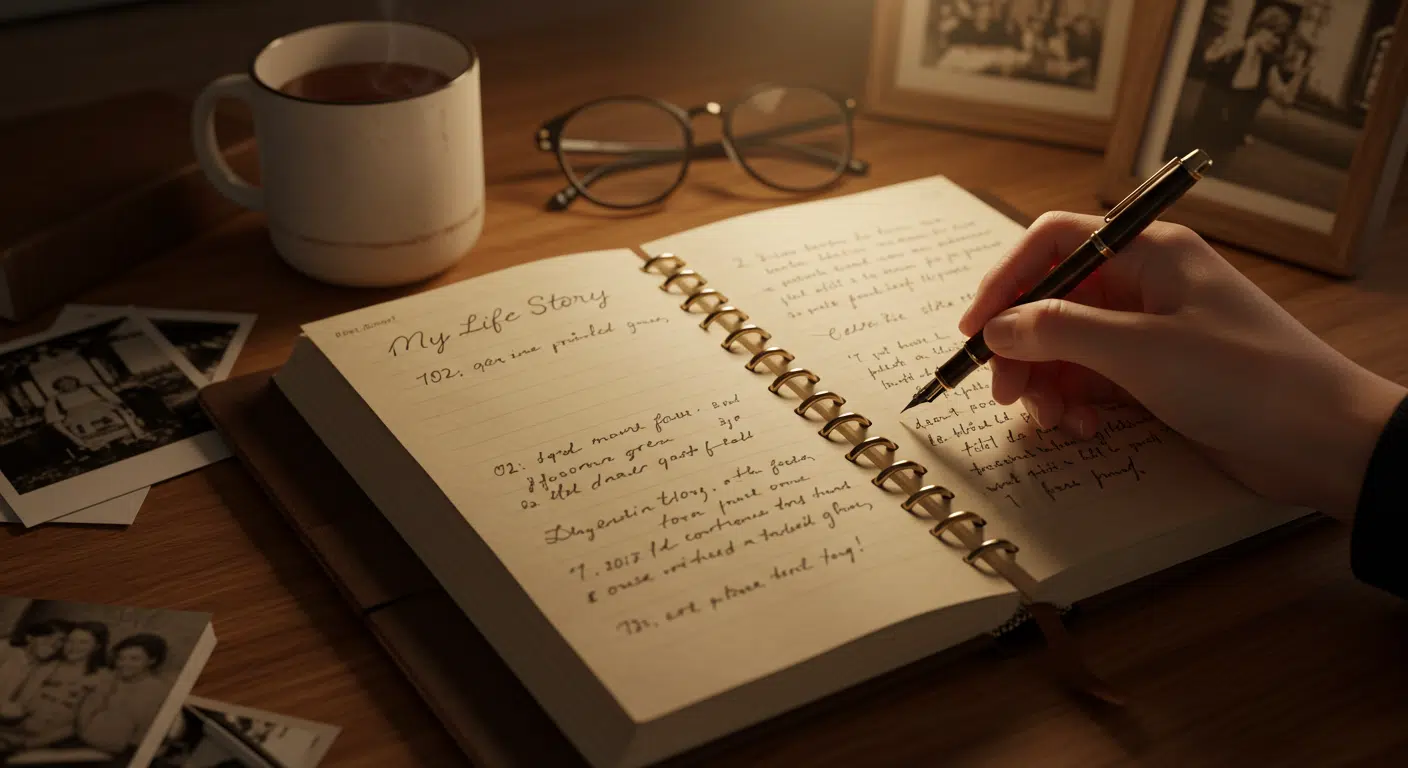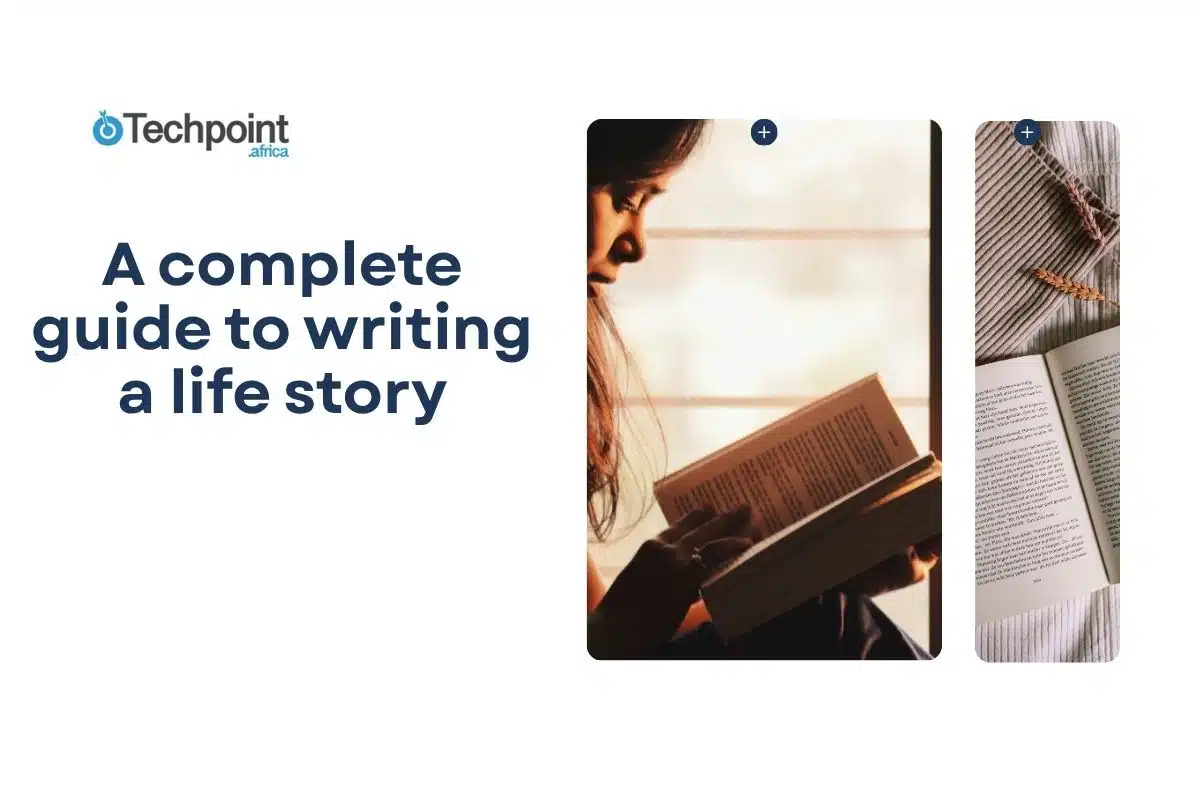Have you ever sat with your grandparents or elderly relatives, listening to their stories and wishing you could capture every detail? You may have wondered how to preserve your own journey for the children and grandchildren who will come after you.
Writing a life story isn’t just about documenting what happened; it’s about creating a bridge between generations, sharing the wisdom you’ve gained, and helping others understand the experiences that shaped who you are today.
Here’s the thing: writing your life story doesn’t mean you need to chronicle every single day from birth to now. It’s about carefully choosing the moments that matter most, reflecting on how they changed you, and finding ways to share those experiences that will resonate with the people you care about most.
Understanding life story writing
Life story writing is different from writing a full autobiography. You’re not trying to document everything that ever happened to you. Instead, you’re focusing on the themes, lessons, and periods that shaped your identity. Think of it like this: if someone asked you to explain what made you who you are today, what would you tell them?
The best life stories mix real facts with emotional truth. They create narratives that anyone can connect with, no matter their background. Modern life books provide structured ways to capture these stories, offering frameworks that help you organize your thoughts into something that makes sense.
What makes a life story worth reading
A good life story shows transformation. It shows how experiences changed your perspective and values. These narratives highlight moments when you had to be resilient, when you showed courage, and when you learned something that changed everything. Cultural background matters too; it helps readers understand why you made the choices you did.
Life story vs. Memoir: what’s the difference
Memoirs typically focus on a specific time or theme in one’s life. Life stories take a bigger picture approach. They examine how different experiences connect to reveal the complete picture of your journey. Life stories also work well for general readers because they focus on universal themes such as family, friendship, persistence, and personal growth.

Structure
The organization of your life story is crucial. Professional memorial books utilize these structural elements to create lasting tributes that celebrate someone’s life while providing readers with meaningful insights.
Two ways to structure your story
1. Chronological Structure
This follows your life from beginning to end—birth, childhood, adulthood, and later years. It’s straightforward and helps readers see your growth and transformation over time.
2. Thematic Structure
This groups your experiences around specific themes, such as love, career, health, travel, or personal values. It lets you dive deep into patterns and insights across different stages of life, even if they occurred years apart.
Here’s a quick comparison:
| Feature | Chronological Structure | Thematic Structure |
| Follows time order | Yes | No |
| Best for showing growth | Yes | Only if connected through themes |
| Groups by topic | No | Yes |
| Works well for memoirs | Yes | Yes |
| Helps highlight key values | Sometimes | Always |
Identify your turning points
Every meaningful life story includes a few key moments that changed everything. These might be:
- Big life decisions
- Personal breakthroughs
- Unexpected setbacks
- Achievements that redefined your path
Spend time reflecting on why these turning points mattered, not just what happened. What did you learn? How did it shape your next steps? That’s where your story finds its power.
Finding your voice and theme
Starting feels overwhelming when you’re looking at decades of experiences and memories. The trick is figuring out your main message first. What do you want people to take away from your story?
Here’s how successful life story writers get started:
- Memory mapping: Write down significant events, people who influenced you, and values that guided your decisions
- Theme spotting: Look for patterns like resilience, family importance, or personal growth
- Timeline building: Put major life events to see how they connect
- Value digging: Figure out what core beliefs shaped your big decisions
Your central message
Every good life story has one central message that ties everything together. It’s about the importance of family, the value of perseverance, how your cultural heritage has shaped you, or the lessons you’ve learned from overcoming tough times.
Connecting with readers
Think about who you’re writing for. Are you writing for family members? Future generations? A broader audience? The best life stories find ways to connect personal experiences to universal themes that anyone can relate to, regardless of their background.
Life story prompts
- What’s one childhood memory that shaped who you are today?
(Think of a moment that changed your view of people, fear, love, or success.) - Describe a time you overcame something really difficult. What did it teach you?
(Be honest about the struggle, then focus on what changed inside you.) - What’s the biggest turning point in your life—and what led up to it?
(This could be a decision, a crisis, a loss, or a bold leap.) - Who has had the greatest influence on your values or beliefs—and why?
Consider a parent, mentor, friend, or even someone who has caused you pain. What did they leave behind? - What’s a moment in your life that made you feel truly proud?
(Don’t just list the achievement—describe how it felt and what it meant to you.) - Have you ever failed at something important? How did you bounce back?
(Describe the failure honestly, then show your resilience.) - What’s a tradition, cultural value, or family ritual that you’ve carried on?
(Why is it meaningful to you? How does it connect to your identity?) - What’s one decision you made that changed the direction of your life?
(Big or small—highlight what followed and how you feel about it today.) - What did you once believe about life that you no longer believe? What changed?
(This gives your story emotional depth and shows personal growth.) - If someone only remembered one thing about your story, what should it be—and why?
(This helps you find your theme.) Every strong story has one.)
Life story examples and templates
These examples show different ways to organize and present life experiences. Each one highlights specific themes and writing strategies that create engaging narratives. You can find the life story examples here in PDF.
Writing techniques that work in 2025
Good life story writing requires specific techniques that bring experiences to life and help readers connect emotionally with your narrative.
1. Making scenes come alive
Use sensory details to make scenes memorable. Don’t just tell what happened; help readers feel like they were there. Describe how things looked, sounded, and smelled. Show people’s personalities through their actions and words, not just by saying “she was kind.”
Dialogue matters too. When you recreate conversations, you’re letting readers hear the voices of important people in your life. You probably can’t remember exact words from years ago, but you can capture the essence of important conversations.
2. Balancing story and reflection
The best life stories move back and forth between describing what happened and exploring what it all meant. Alternate between detailed scenes and reflective passages. Share insights you gained through experience. Connect your personal experiences to broader human themes that everyone can relate to.
Formatting and presentation
How you present your life story affects how people experience it. Clean, correct writing shows respect for both your story and your readers.
Grammar and style that work
Clear writing lets your story shine without distracting readers with errors. Maintain a conversational tone that reflects your personality, but ensure that your writing is grammatically correct, punctuated correctly, and structured effectively. Consistency matters—stick with the same perspective and tone throughout.
Sharing your story
Consider how you would like to share your finished story. Physical copies for family? Digital versions for easy sharing? Maybe even a professional publication? Platforms like Meminto offer ways to create beautiful, professionally formatted life story books that families can treasure for generations.
Frequently Asked Questions
1. How long should a life story be?
Anywhere from a few pages to a book length. Most effective life stories fall between 20 and 100 pages; enough depth to be meaningful without overwhelming readers.
2. Should I include difficult experiences?
Including challenges often makes life stories more relatable and valuable. However, only include experiences that you’re comfortable sharing and that contribute to your overall message.
3. Can I write someone else’s life story?
Absolutely. Many life stories are collaborative projects. This typically involves numerous interviews and thorough research to capture the person’s authentic voice and perspective.
4. How do I organize decades of memories?
Start with a timeline of significant events and identify recurring themes. Group related experiences together and focus on the most significant moments that illustrate your central message.
5. What if I can’t remember exact details?
Use family documents, photos, and conversations with relatives when possible. Remember that life stories focus more on emotional truth and meaning than perfect factual accuracy.










